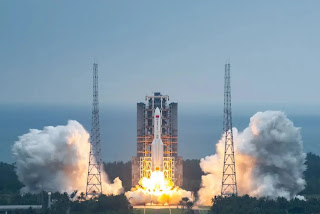
Australia’s First Homegrown Orbital Rocket Prepares for Rescheduled Launch Australia is set to make space history as Gilmour Space Technologies prepares for the rescheduled launch of the nation’s first-ever homegrown orbital rocket, the Eris. The launch window has now been reset to begin no earlier than July 2, following a technical issue that forced a delay in May. The initial attempt was called off after a malfunction during final countdown checks caused the rocket's payload fairing—its protective nose cone—to detach prematurely. Fortunately, the incident resulted in no damage to the vehicle or the Bowen Orbital Spaceport. Gilmour Space, based in Queensland, has since corrected the issue, installed replacement components, and completed rigorous system checks. The company has also implemented additional safety protocols to avoid any recurrence of the problem. The Eris rocket, standing approximately 25 meters tall, is a three-stage launch vehicle designed to place small satellites ...



.jpg)
.jpg)
